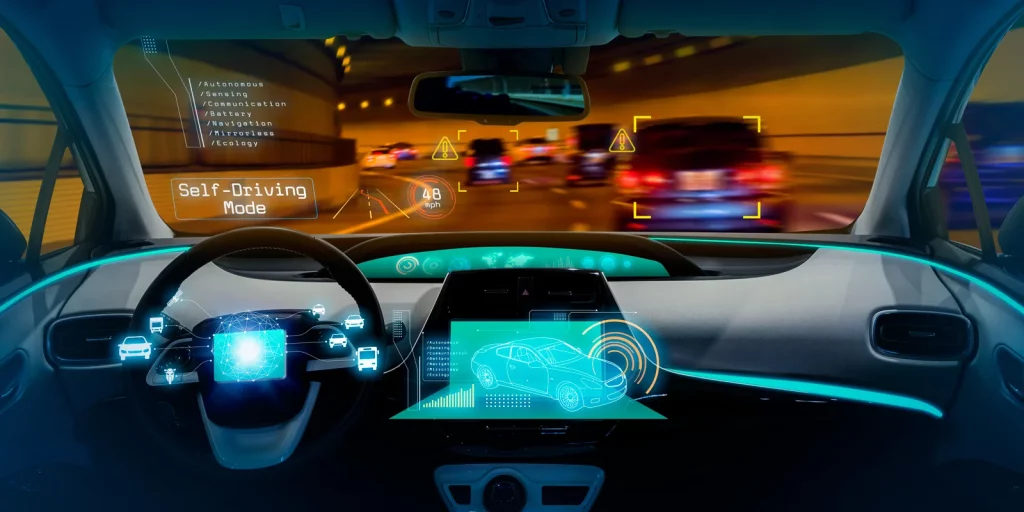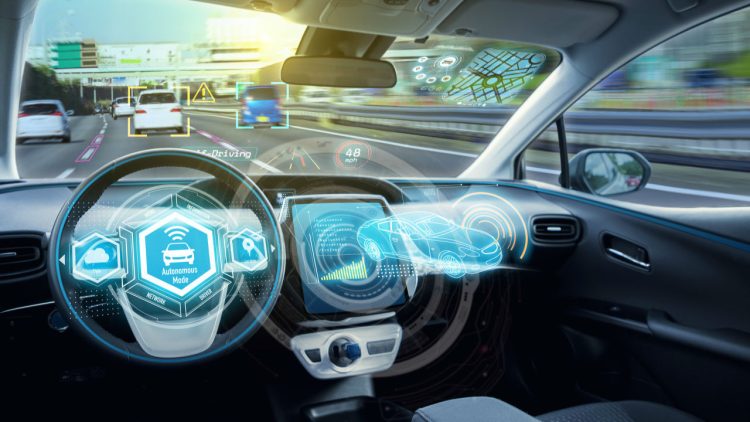In recent years, autonomous driving technology has been one of the most talked-about innovations in the automotive industry. With major players like Tesla, Waymo, Uber, and traditional automakers such as Ford and General Motors investing heavily in autonomous vehicle (AV) development, the promise of fully self-driving cars is no longer just a futuristic concept—it is closer to reality than ever before. However, the question remains: Is the progress in autonomous driving technology enough to earn full consumer trust?
As autonomous vehicles (AVs) evolve, they offer significant potential for improving road safety, reducing traffic congestion, and enhancing convenience for drivers and passengers. Yet, despite the numerous advances, consumers remain hesitant. From concerns about safety and reliability to ethical considerations and the technology’s ability to handle unpredictable road situations, trust in autonomous driving technology is not guaranteed.
This article will explore the progress made in autonomous driving, analyze the current obstacles that prevent consumers from fully trusting self-driving technology, and examine whether we are on the brink of a new era in automotive transportation where people are ready to relinquish full control to their vehicles.
1. What is Autonomous Driving?
Autonomous driving, or self-driving, refers to a vehicle’s ability to operate without direct human intervention. These vehicles use a combination of sensors, cameras, radar, lidar, and artificial intelligence (AI) to navigate roads, detect obstacles, make decisions, and respond to traffic conditions.
There are several levels of automation defined by the SAE International (Society of Automotive Engineers), ranging from Level 0 (no automation) to Level 5 (full automation). At present, most vehicles on the road are at Level 2 (partial automation), where systems like adaptive cruise control and lane-keeping assistance are available, but the driver must remain engaged.
The goal of autonomous vehicle development is to reach Level 5, where the car can drive completely on its own, in any situation, under all road conditions, without any human involvement. While Level 5 is still a long way off, significant advancements have been made in achieving higher levels of automation.
2. Recent Advancements in Autonomous Driving Technology
In recent years, autonomous driving technology has made remarkable strides. Many companies are conducting trials of self-driving vehicles, and a few have already deployed autonomous taxis in select cities. Some of the most notable progress includes:
a. Improved Sensor and Perception Systems
Self-driving cars rely on a combination of sensors and AI to understand their environment. This includes cameras, radar, and LiDAR (Light Detection and Ranging) sensors, which help the car detect objects, measure distances, and understand the surroundings. These sensors have become more accurate, affordable, and reliable, enabling vehicles to better navigate complex environments.
The latest systems are capable of recognizing pedestrians, cyclists, road signs, and even traffic signals, with greater precision. In urban areas with high traffic density and unpredictable behaviors from other road users, these advanced sensors are crucial for the vehicle’s ability to make quick, safe decisions.
b. Machine Learning and Artificial Intelligence
Machine learning algorithms are enabling autonomous vehicles to learn from data and improve over time. These AI-powered systems help self-driving cars understand how to respond to new or unexpected scenarios by recognizing patterns and making real-time decisions based on past experiences.
For example, AI can allow a self-driving car to make decisions when faced with complex road situations, such as a pedestrian suddenly crossing the street or another car cutting in front unexpectedly. With vast amounts of data from driving simulations and real-world road tests, the AI is continually improving to handle these scenarios with increasing accuracy.
c. Regulatory and Infrastructure Developments
Governments are starting to recognize the importance of regulating autonomous driving technology. Many regions, especially in the United States and Europe, are developing legal frameworks that allow self-driving cars to be tested and deployed on public roads. Some cities have already opened up specific lanes for autonomous vehicles, while others are creating infrastructure to better support AVs, including dedicated parking spaces and smart traffic lights that can communicate with the vehicles.
Additionally, companies are working on establishing dedicated autonomous vehicle fleets, such as Waymo’s autonomous taxis, which are already operating in specific regions like Phoenix, Arizona. These trials are helping refine the technology and provide insights into the real-world challenges of deploying fully autonomous vehicles.
3. Barriers to Consumer Trust in Autonomous Vehicles
Despite these advancements, several barriers are preventing consumers from fully trusting autonomous driving technology. Let’s explore some of the key concerns:
a. Safety Concerns and High-Profile Accidents
One of the biggest factors hindering consumer trust is the fear of accidents. Although self-driving cars are statistically safer than human drivers, high-profile accidents involving autonomous vehicles have garnered significant media attention, eroding public confidence. Incidents such as the Uber self-driving car fatality and the Tesla Autopilot crashes have raised important questions about the technology’s ability to safely operate in real-world conditions.
While the vast majority of AV tests are conducted without incident, isolated failures—often highlighted by the media—have led to skepticism regarding the reliability and safety of these systems. Many consumers question whether autonomous technology is ready for widespread use on public roads, particularly in situations where human judgment and intervention may still be necessary.
b. Ethical Dilemmas and Decision-Making
Another major concern surrounding autonomous vehicles is the ethical dilemma of how these cars will make critical decisions in emergency situations. For example, if an autonomous vehicle faces a scenario where it must choose between hitting a pedestrian or swerving into oncoming traffic, how should it decide?
These kinds of moral questions have generated considerable debate. Some believe that programming autonomous vehicles to make life-and-death decisions could lead to unpredictable consequences. Others argue that AI should be trained to minimize harm in any scenario. Until clear ethical guidelines are established and the decision-making process is transparent, many consumers may remain hesitant to trust autonomous technology.

c. Lack of Human Control and Over-Reliance on Technology
There is a psychological aspect to the lack of human control in self-driving cars. While some drivers are open to the idea of semi-autonomous driving, where they can take over in emergencies, many are uncomfortable with the idea of relinquishing total control to a machine. This fear of being in a vehicle without the ability to intervene can make consumers feel vulnerable.
Additionally, there are concerns about over-reliance on technology. What happens if the AI systems malfunction, or if the vehicle encounters a situation the algorithm is not programmed to handle? How will it respond in unpredictable or severe weather conditions, or on poorly marked roads? These uncertainties are contributing factors to consumer reluctance.
d. Legal and Insurance Implications
The deployment of autonomous vehicles raises significant legal and insurance challenges. Questions regarding liability in the event of a crash involving an autonomous vehicle remain unresolved. Who is at fault—the vehicle manufacturer, the software developer, or the human operator (if applicable)?
Currently, the insurance industry is grappling with how to adjust its policies to account for AVs. If a self-driving car crashes, who will be held responsible, and how will insurance premiums be adjusted for these vehicles?
4. How Close Are We to Consumer Trust in Autonomous Vehicles?
Despite the challenges, there is still significant optimism about the future of autonomous vehicles. The technology has come a long way, and many believe that with continued advancements and further testing, self-driving cars can eventually earn the trust of consumers.
Some factors that could help build trust in autonomous driving include:
- Continuous improvement in technology, particularly in AI and sensors, which could help reduce accidents and improve the vehicle’s ability to handle complex scenarios.
- Stronger regulations and clear safety standards that ensure autonomous vehicles meet rigorous safety and ethical criteria.
- More successful real-world trials where autonomous vehicles consistently demonstrate their ability to handle everyday road situations without significant issues.
Additionally, as younger generations who are more comfortable with technology and automation become the primary consumers, trust in autonomous vehicles may increase naturally over time.
5. Conclusion: Will Consumers Ever Fully Trust Autonomous Vehicles?
While autonomous driving technology has made remarkable progress, full consumer trust in self-driving cars is still a long way off. Many consumers remain skeptical due to safety concerns, ethical dilemmas, the lack of human control, and unresolved legal issues.
However, incremental progress in the technology, stricter regulations, and successful real-world demonstrations could pave the way for greater acceptance of autonomous vehicles. Over time, as the technology improves and more consumers experience the benefits firsthand, trust is likely to grow.
For now, though, while autonomous driving is a promising future of transportation, consumers are understandably cautious. As the industry continues to advance, it will take continued innovation and time to earn the trust of the public fully.


































Discussion about this post